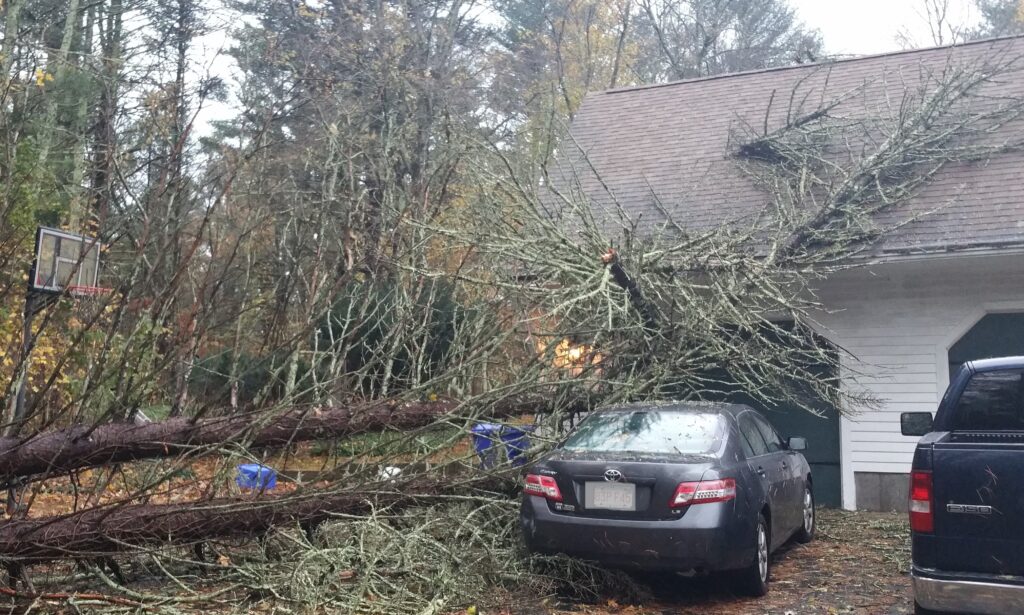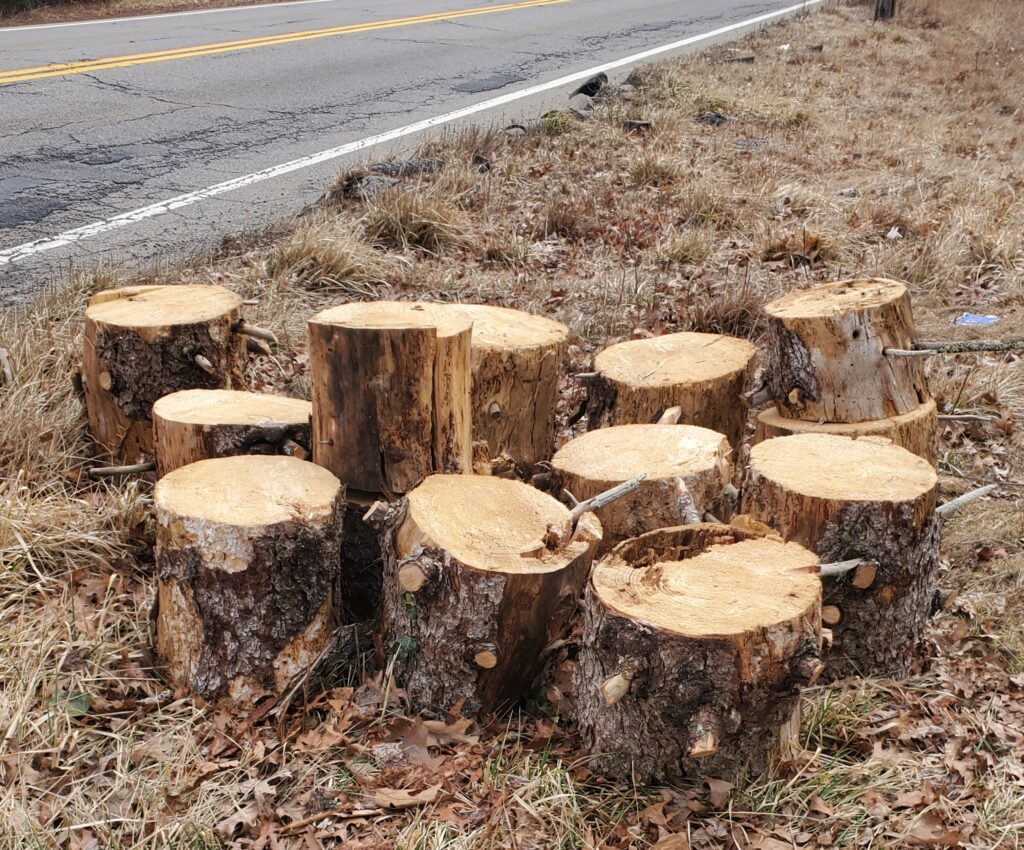A storm rips through and now you have to get rid of a giant fallen tree in your yard. How can you do it without spending your whole paycheck? How can you safely clear the tree from your property? In this post, we will give you several different options for breaking down and disposing of fallen trees at different price points so you can decide what works best for you and your budget. In most cases you can absolutely take care of removing a fallen tree on your own.
Why Get Rid of Fallen Trees?
There are 3 main reasons to get rid of a fallen tree on your property as quickly as possible:
1.Access – Depending on where the tree fell it may be blocking your driveway, doors, or garage. Even if there isn’t an obvious obstruction you may still need to address it to access less apparent things such as septic lids or power lines.
2. Damage Assessment/Repair – If a tree has fallen on your home, outbuilding, or vehicle, moving it as quickly as possible will allow you to get a clear view of the damage and potentially prevent any further damage from rain or snow. You also want to be able to start the insurance claim process or have any contractors provide estimates and they will need to be able to visualize the damage.


Note: Always take before and after pictures. Capture the fallen tree in place and then take additional images of the damaged area after it has been removed. These photos will be helpful if you are filing any insurance claims. Always check with your insurance company before removing the tree as their adjuster may want to see it in place or they may only cover removal by a licensed professional.
3. Invitation to Insects – If a tree has fallen in your yard and it isn’t obstructing anything you may be tempted to leave it. Don’t. Insects are drawn to damaged wood and you now have a haven for carpenter ants and termites in close vicinity to your home. And that pretty old house of yours might start to look really tempting to them! Also, the tree may be diseased and that is why it fell and you do not want that to spread to any other trees or greenery.
How Do You Deal With a Fallen Tree?
Depending on how the tree has fallen and what it is leaning on you may be able to cut it up yourself.
SAFETY FIRST: Any tree that is only partially fallen or is leaning on an object, can be dangerous to cut into pieces – gravity is a powerful force. Pieces may fall in unpredictable ways. It may be best to hire a professional in these situations. It will be more expensive up front but you will save way more by not injuring yourself or not causing any further damage to the object the tree is on.
Also NEVER deal with a tree that has taken down any power lines. This must be absolutely handled by a pro.
If there is a tree resting on the ground and you are ready to tackle it you will need a chainsaw, wheelbarrow, and a brush or rake for cleanup.

Step 1: Remove the branches from the trunk. It will be easier to deal with the cutting up of the trunk if you have clear access to it. Use a wheelbarrow to move the cut branches out of the way to be dealt with after.
Step 2: If the tree is resting completely flat on the ground you may need to jack it up or lift it partially. You don’t want your chainsaw to cut into the ground, this can cause kickback and damage to your chain.
Another safety note here as propping up the tree can make it unstable and it may want to roll, especially while you are cutting it. Always be sure the tree is secure and stable and re-check it constantly during the breakdown process.
Step 3: Cut the trunk of the tree into small segments to easily be rolled away. 16-inch pieces are easy to manage and are the ideal length for potential firewood.
Step 4: Once the trunk is completely segmented and the logs moved to the side – clean up the debris with a rake or broom.
How to Dispose of a Fallen Tree
Branches
Low Budget Option – Burning: Depending on the time of year and the rules of your town (you may need a permit) burning is always the best option. A burn barrel is a great way to do a controlled burn. Always have a hose nearby and never burn if you are in a period of drought or it is windy.
Branches burn quickly and easily and are reduced to a small manageable amount.
Tip: Ashes can be a great resource for your yard. Use them in your compost heap, or as a snail and slug repellant around plants.
Mid Budget Option – Woodchipper: If you don’t own a wood chipper (which is a VERY pricey item) most tool rental centers have one available for rent for a ½ day. Depending on the size of the chipper you get you can typically rent them for between $100 – $200.
Use the woodchips around the yard as mulch or a weed suppressant. Wood chips are a great way to create paths in wooded areas. Or add them to your compost pile.
If you have more wood chips than you can use in your yard post them for free pickup on Facebook Marketplace or an online community billboard if your town has one.
Trunk Segments

Low Budget Option – Recycle: A lot of people will take logs off your hands to split them into firewood, especially if you have already done the hard part of getting them down to 16-inch lengths! Once again you can post them on Facebook Marketplace, an online community billboard for your town, or just leave them at the end of your driveway and people will usually grab them.
Mid Budget Option – Log Splitter: If you own a log splitter this will be your best option (log splitters are also typically available to rent from tool centers). Both because you will make a pile of usable firewood for yourself and because you could potentially make some cash by selling it as unseasoned firewood.
Note: If the tree was pine you should not burn these logs in an indoor fireplace. The pine will lead to rapid creosote buildup. Pine should be reserved for outdoor fire pits or camping.
Having had 3 large trees fall in our yard (one just a week after we moved in!) we have learned a lot about this process. Each tree will be different because of where it fell/how it fell/the condition of the tree. Hopefully this post has given you some guidance on the best way to approach removing a fallen tree quickly and safely.
Have any extra tips for tree removal or ideas for what to do with the remains? Comment down below.